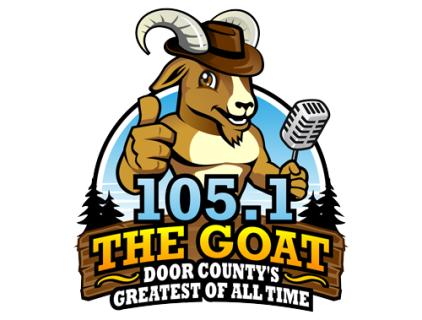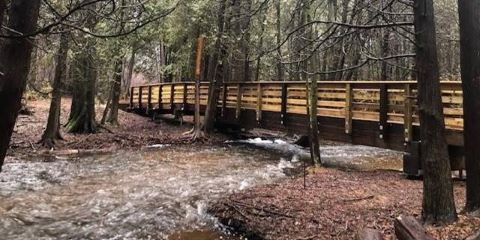This week, we are thankful for recreation, which includes a host of activities which are, according to Google’s English dictionary, "done for enjoyment when one is not working." We at Crossroads are dedicated to inspiring environmental stewardship, and we believe that people of all ages and all backgrounds who enjoy recreational activities on our trails, in our waters, and at our events will gain a greater connection to the land. We also believe that providing a free and safe place for outdoor activities results in both physical and mental health benefits. And for that, we are truly grateful.
A growing body of research has shown that recreation in nature, called “green exercise,” can improve self-esteem, improve sleep, and lower blood pressure. In children, nature-based exercise seems to reduce the symptoms of hyperactivity. Perhaps the most valuable benefit for most people is that time spent outdoors can decrease stress and anxiety—which most of us experience to one degree or another, especially in winter.
So, during a Wisconsin winter, we can take our cue from our wildlife and either hibernate or embrace the cold season, living to the fullest.
Rabbits do not hibernate, but rather, seem to embrace the winter. These creatures have enormous, hair-covered hind feet which enable them to bound over the surface of deep snow. People wearing snowshoes, like rabbits, can venture off into deep snow throughout the preserve. They can walk on the frozen water of Big Creek. They can leave the trail to explore, just like explorers have been doing for thousands of years.
The origin of snowshoes will never be known for certain. But while skis were developed in Europe, Canadians are convinced that, inspired by snowshoe hares, the First Nation People of the Far North invented snowshoes. As the First Peoples spread across the continent, each successive generation learned to adapt snowshoes to fit the climate of the region they explored. European immigrants learned to use snowshoes from First Peoples. Using snowshoes, trappers and loggers, like rabbits, could travel over the drifts and deep snow in winter.
Even more than rabbits, which are desirable prey, otters thrive in snow and ice. They appear to enjoy winter immensely. And yes, we have otters at Crossroads.
Animal behaviorists tiptoe around the words “play” and “fun” and they may be right. I’m sure the games of tag otters engage in and the wrestling they do is some sort of bonding or socialization behavior. And maybe balancing sticks on their noses and juggling pebbles is just coordination training which helps otters become effective hunters. And the sliding on snow and ice clearly is an efficient way to travel.
But it sure seems to me that otters are having a great time, playing in the snow and fishing through the ice just like the people who make Door County their winter residence.
When folks started using kicksleds to glide around the Big Creek Preserve, I noticed that the technique used mimics that used by our otters. And where European otters live in Sweden, Norway and Finland, kicksleds have been popular for more than a century.
Otters use their feet to bound over the snow, building up momentum. Then they drop to their bellies and slide, five, ten, sometimes even 15 feet before kicking forward again. So, were kicksleds inspired by otters?
Perhaps. But, apparently kicksleds were first developed in The Netherlands, a land too flat for downhill skiing and crisscrossed with icy canals. Until the last century, otters were rather common in Holland. Who knows?
We do know that like otters, cross-country skiers glide across reasonably flat surfaces.
And as soon as we have enough snow to create a base, Crossroads will be grooming trails, and on weekends, we will lend skis – free of charge – in a weekend program aptly named Ski-for-Free. We lend winter equipment – skis, snowshoes and kicksleds – so Door County residents and visitors, like otters, can take joy in winter recreation.
Or folks may want to participate in winter like a Cooper’s Hawk. These raptors are birdwatchers, secretly hiding in the trees or shrubs watching and waiting for the opportune time to pounce on a medium-sized bird. Indoors or outdoors, winter birding is a great recreational activity, so Crossroads has now started a program we call Bird Club.
At this point, Bird Club is not an organization (though it may grow into being one) but rather a monthly program offered the first Tuesday of every month for those interested in learning more about birds and/or those who want to participate in a meaningful Community Science program. On Tuesday, December 6, at 6:30 p.m., the Bird Club program will include a discussion of the “Winter Finch Forecast 2022,” the upcoming Christmas Bird Count, and discuss suggestions of a few holiday gifts for a birder.






